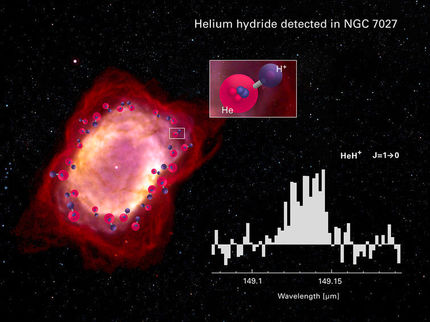Measuring quadrupole spins with zero-field NMR for the first time
Decisive step forward in zero-field magnetic resonance spectroscopy and thus towards precision chemistry
Advertisement
What does the structure of a particular molecule look like? How do molecules interact with each other? magnetic resonance spectroscopy is often used to answer such questions. The spins of the atomic nuclei are aligned with a strong external magnetic field and made to rotate via an oscillating weak magnetic field - generated by coils. As a result, the voltage changes, which can be converted into a frequency. This frequency indicates the type of molecule and also reveals something about the interaction of the nuclear spins. However, high magnetic fields are required for these investigations, which require very large devices that are difficult to install. It is also difficult to measure nuclei with a quadrupole spin. However, these are present in most magnetic atomic nuclei.

NMR tubes filled with liquids
© Oleg Tretiak
Zero-field magnetic resonance spectroscopy, or zero-field NMR for short, on the other hand, does not require a strong external magnetic field - the couplings between the nuclear spins of magnetically active nuclei are the dominant quantum mechanical interaction. The lines of the spectrum are therefore narrower and sharper, and samples can also be examined in vessels made of metal or other materials. Zero-field magnetic resonance spectroscopy is of interest in metallurgical research, plant research and medicine, among others. However, in order to be able to measure the minimal couplings, the earth's magnetic field must be shielded - a complex matter.
Simple yet precise experimental setup
Researchers at Johannes Gutenberg University Mainz (JGU) and the Helmholtz Institute Mainz (HIM), together with the University of California, Berkeley, have now succeeded for the first time in measuring a quadrupole nucleus using zero-field NMR. "To be more precise, we analyzed an ammonium molecule, i.e. NH4, as this is very important for various applications," said Dr. Danila Barskiy, group leader at JGU. "In future, we hope to be able to detect these molecules even in complex environments such as reactors and metal containers." Using ammonium, the researchers developed a simple system: mix ammonium salt with water, add different amounts of deuterium - and the individual spectra can be recorded and analyzed. The scientists used a device the size of a fingernail, which is available on the market. A magnetically shielded room is also unnecessary; a magnetically shielded compact measurement setup is sufficient.
Precision measurements allow theories to be tested
Another interesting question that the researchers investigated: How does the number of deuterium atoms in an ammonium molecule influence the spectrum and the relaxation properties of the spins? "Our method makes it possible to determine the resonance frequencies with the highest precision. By comparing these with experimental data, the method can therefore be used as a benchmark for quantum chemical calculations. We are eagerly hoping that our work will become standard practice in the near future," explains Román Picazo-Frutos, student at the Institute of Physics at JGU and first author of the publication. Although current theories already predict the team's results quite well, there are still small deviations. "This work significantly expands the range of molecules that can be analyzed using zero-field to ultra-low-field NMR techniques and could lead to the development of novel applications, such as the analysis of small atomic numbers via their radioactive gamma decay. There is still a lot to do!" summarizes Prof. Dr. Dmitry Budker from JGU.
Note: This article has been translated using a computer system without human intervention. LUMITOS offers these automatic translations to present a wider range of current news. Since this article has been translated with automatic translation, it is possible that it contains errors in vocabulary, syntax or grammar. The original article in German can be found here.
Original publication
Other news from the department science
Most read news
More news from our other portals
See the theme worlds for related content
Topic World Spectroscopy
Investigation with spectroscopy gives us unique insights into the composition and structure of materials. From UV-Vis spectroscopy to infrared and Raman spectroscopy to fluorescence and atomic absorption spectroscopy, spectroscopy offers us a wide range of analytical techniques to precisely characterize substances. Immerse yourself in the fascinating world of spectroscopy!

Topic World Spectroscopy
Investigation with spectroscopy gives us unique insights into the composition and structure of materials. From UV-Vis spectroscopy to infrared and Raman spectroscopy to fluorescence and atomic absorption spectroscopy, spectroscopy offers us a wide range of analytical techniques to precisely characterize substances. Immerse yourself in the fascinating world of spectroscopy!































































